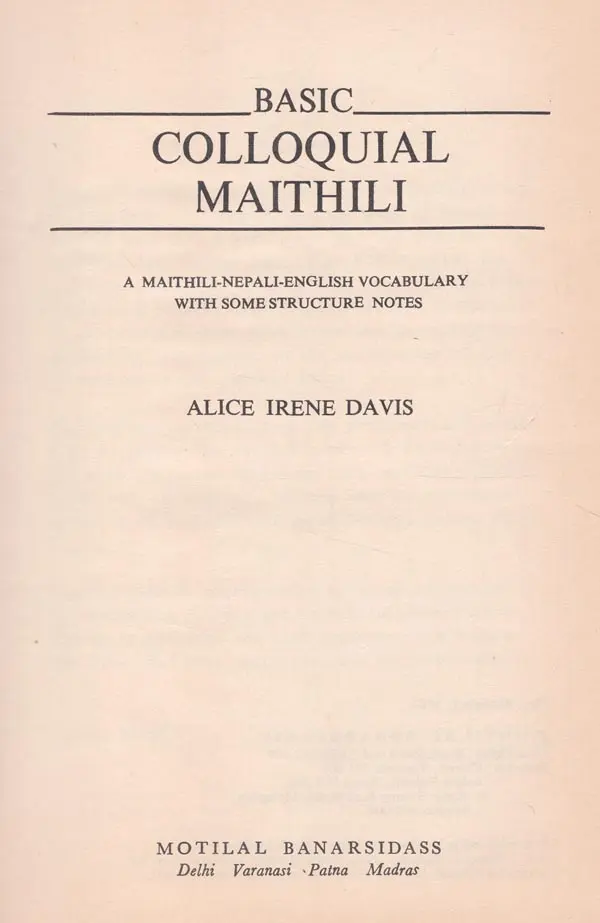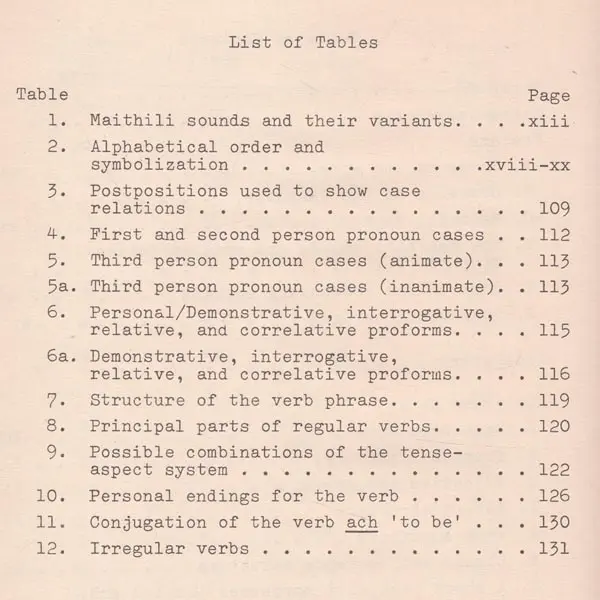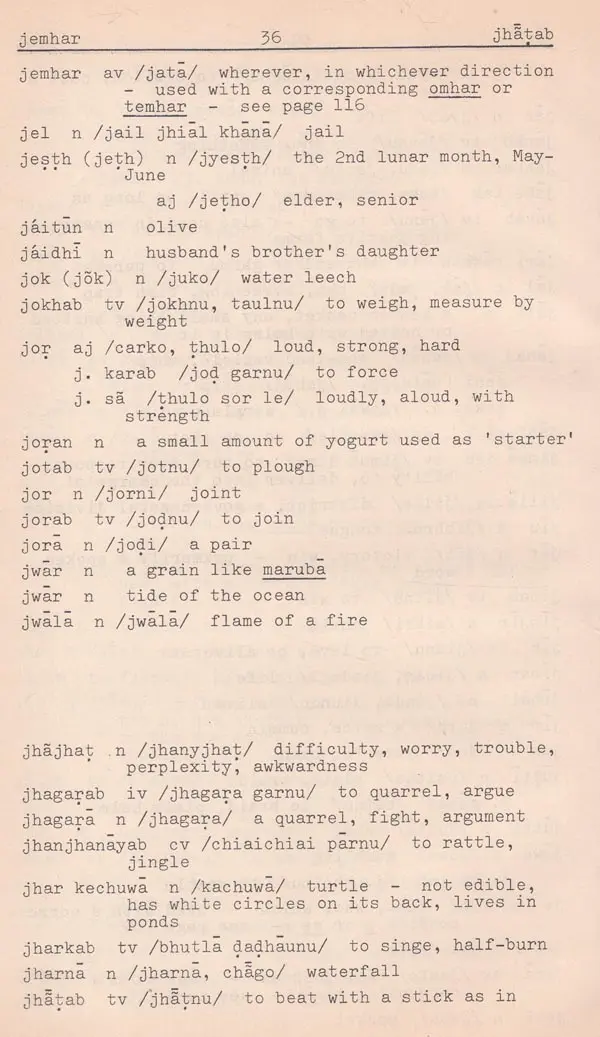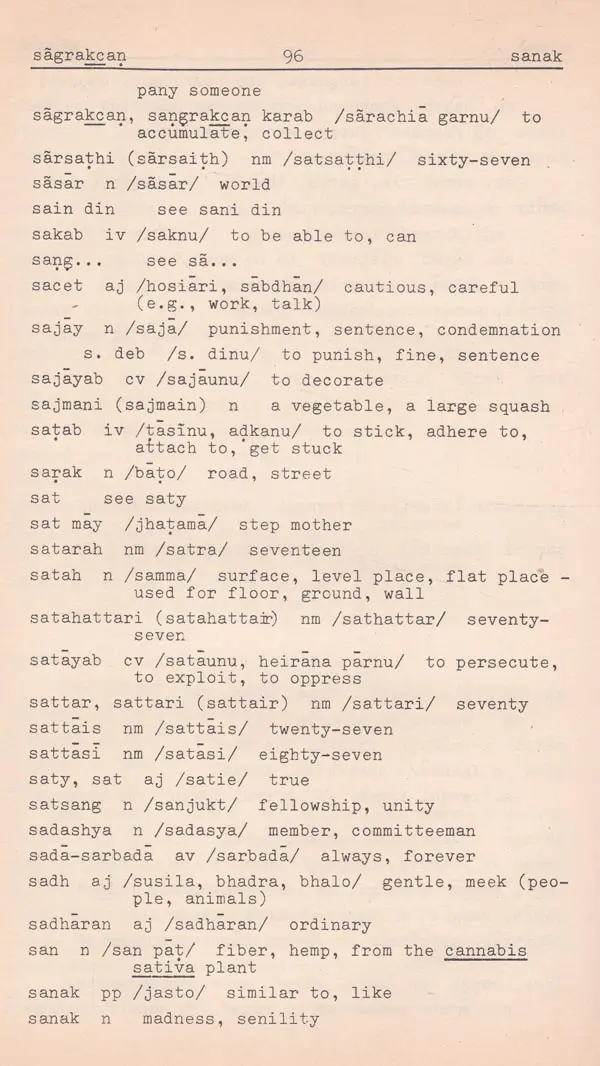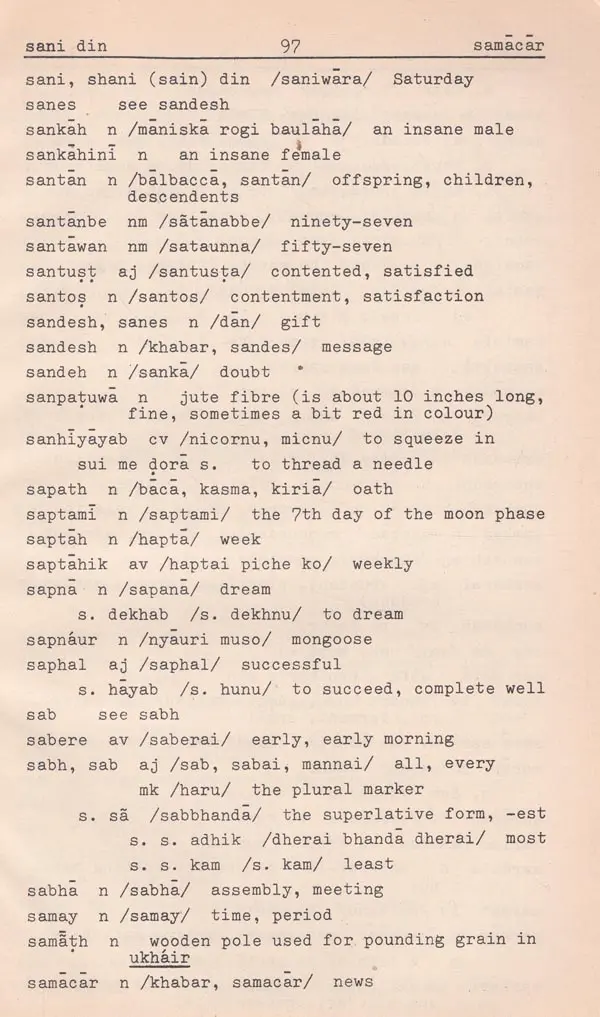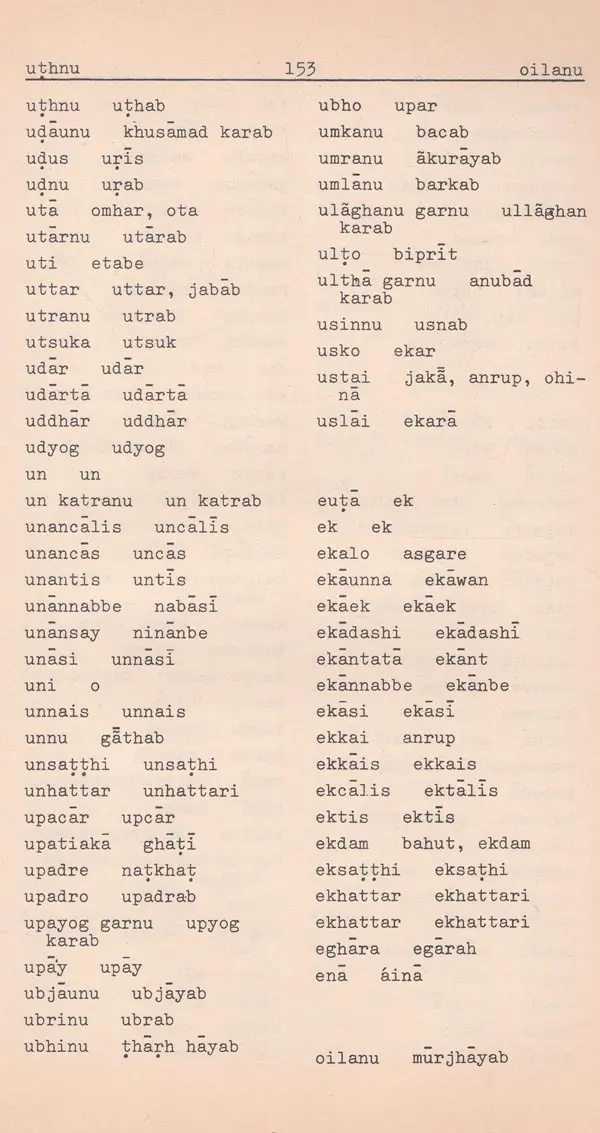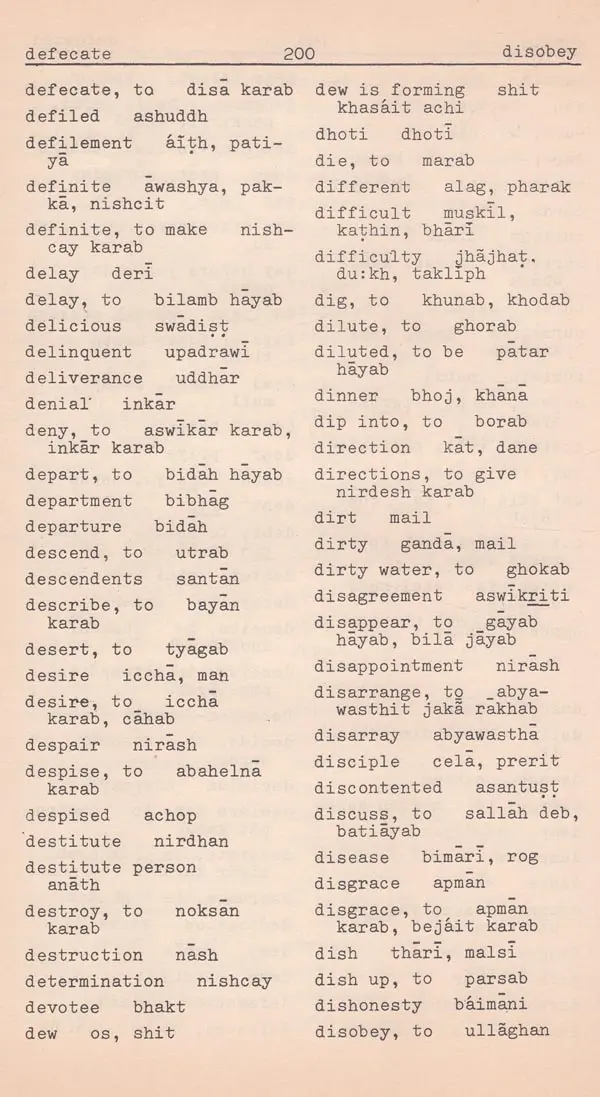
Basic Colloquial Maithili: A Maithili-Nepali-English Vocabulary (An Old and Rare Book)
Book Specification
| Item Code: | UBD359 |
| Author: | ALICE IRENE DAVIS |
| Publisher: | MOTILAL BANARSIDASS DELHI |
| Language: | English |
| Edition: | 1984 |
| ISBN: | 0895817624 |
| Pages: | 264 |
| Cover: | HARDCOVER |
| Other Details | 9.00 X 6.00 inch |
| Weight | 420 gm |
Book Description
The Maithili language, spoken by approxi- mately 15,000,000 persons of Bihar State. and, in addition, by 1,300,000 people of the Terai districts of southeastern Nepal, boasts a long and rich literary history and continues to flourish in contemporary writing in a significant variety of literary styles. But for the person knowing English, who desires to learn the spoken or colloquial form of Maithili there exists little material to help him get started. This Vocabulary. is intended to serve as a language-learning tool for such people. In addition to the English gloss a Nepali language equivalent is provided, where known, for each Maithili entry, making this a trilingual. Vocabulary. It seems to the author quite fitting that Nepali equivalents should be included since much of the initial research was carried out in Nepal sponsored by the Tribhuvan University, Kathmandu.
The main section consists of approximately 2,700 Maithili entries with Nepali and English equivalents. Following this section are language structure notes intended to help the learner acquire a basic knowledge of Maithili grammar. Then follow Nepali and English indices cross-referenced to the main Maithili entries.
While the primary purpose, then, is to help English-knowing people learn Maithili, this volume may also be utilized to assist speakers of Maithili and/or Nepali who desire to increase their knowledge of English vocabulary.
Alice Irvine Davis received her master's degree in linguistics from the University of Illinois, U.S.A. She taught history at Illinois. Her area of specialization is descriptive. linguistics. During her stay in India (1969- 80), she studied the language and culture of the Maithili-speaking people.
Preface
A. Scope of the work
Maithili is a language spoken by approximately 15 million people spread over a wide area of India's northeastern state of Bihar, as well as by approximately 1,300,000 across an international border into southeastern Nepal. In the course of a year many students, researchers, businessmen, government employees, and officials have occasion to spend some time in Mithila, the locality where the Maithili language is spoken. It is primarily for these kinds of people, who are hearing Maithili spoken daily, have learned a few words, and wish to learn more, that this Vocabulary has been prepared. The decision was made to provide a preface in English, and English glosses, since it was assumed that if outsiders knew a common language across an international border, that language would be English. Similarly, it was decided to represent the Maithili entries as well as the Nepali language glosses in Roman transliteration, since it was assumed that those knowing English would be well-equipped to pronounce Maithili words represented by straightforward Roman equivalents of the Devanagari spelling.
This work is intended to be a language-learning tool for non-speakers who are required, for one reason or another, to live, move, and work in a Maithili-speaking area and who desire to learn the spoken language. It should be noted that the vocabulary learned from a study of this work is not in every instance representative of standard written Maithili, or even of standard spoken Maithili. It does claim to represent standard Maithili as spoken in the Janakpur area of southeastern Nepal and in the north Darbhanga and Madhubani districts of north Bihar. Quite naturally the serious language learner will make an effort to learn the words which are current in the local area where he or she resides. Properly used, this Vocabulary should facilitate comparison of different speech forms of colloquial Maithili. This work, therefore, cannot be called a Maithili language course, but rather a word list with some charts, lists, explanation, and examples to aid a beginner in understanding some of the language he hears in his new linguistic and cultural environment. Although the research has been done as part of a linguistic project, the end result should be useful to a wider audience than linguists. Most of the explanations are presented in conventional rather than in technical terminology. Nevertheless, linguists should be able to profit from the Vocabulary for comparative and historical word studies.
Book's Contents and Sample Pages
